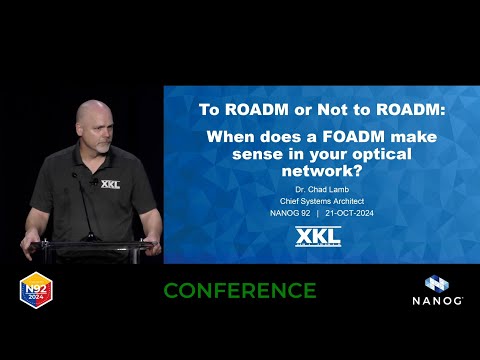Description:
Save Big on Coursera Plus. 7,000+ courses at $160 off. Limited Time Only!
Grab it
Learn about the key differences between ROADMs (Reconfigurable Optical Add Drop Multiplexers) and FOADMs (Fixed Optical Add Drop Multiplexers) in this technical presentation from NANOG. Explore the fundamental building blocks of optical networks, understanding when to implement each technology based on network requirements. Dive into remote adjustment capabilities, path protection features, channel balancing, and configurable channel plans for future-proofing networks. Examine the tradeoffs, advantages, and disadvantages of both technologies through a detailed side-by-side comparison. Discover practical insights on FOADM implementation scenarios, key ROADM elements and characteristics, channel balancing equalization, channel narrowing, noise considerations, and channel routing strategies. Gain valuable knowledge from customer experiences and real-world applications to make informed decisions about optical network infrastructure.

ROADM vs FOADM: Comparing Optical Network Multiplexer Technologies
Add to list
#Engineering
#Electrical Engineering
#Telecommunications
#Fiber Optics
#Computer Science
#Computer Networking
#Network Architecture